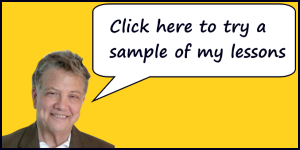Everything You Need to Know about 2♣ Auctions
Everyone loves to pick up a big hand. And when it is obvious to open 2♣, you are happy to do so. However, sometimes the decision as to whether you should open 2♣ is far from obvious.
An exciting and new audio-visual and interactive teaching method from Marty Bergen.
Marty's audio visual format significantly enhances your learning experience:
- The combination of voice and visual effects makes it easier to understand what Marty is teaching.
- The lesson is interactive, so students "learn by doing."
- You can proceed at your own pace.
- You can play and replay all or some of the lesson whenever you choose as many times as you like.
- The lesson includes a written easy to read transcript for you to study.
- The lesson contains several hours of extensive material.
- The lesson is designed to work on most popular computers and browsers, including Windows, Mac, and iPad.
Approximate running time of this lesson: 110 minutes.
In this lesson:
In addition, after a 2♣ opening bid, and responder's 2♦ waiting bid, both players are somewhat in the dark. Responder knows absolutely nothing about opener's distribution. Meanwhile, not only does opener know nothing about responder's distribution, he also has absolutely no idea about the strength of responder's hand. Therefore, getting to the best contract is usually NOT a slam-dunk.
In this lesson, Marty will discuss:
- - What is the minimum number of HCP needed to open 2♣?
- - When should responder NOT respond 2♦ to a 2♣ opener?
- - When can we stop below game?
- - Is it correct to open 2♣ with a 2-suited hand?
- - When should you NOT open 2♣ despite being strong enough?
- - How should opener proceed after responder's Double Negative?
- - How important is it for the stronger hand to be declarer?
- - After 2♣, when is it correct to jump?
- - When should the responder take control?
Here is an example of what Marty will discuss:
You are the dealer and hold ♠AKQJT98 ♥A ♦A4 ♣T93
You are in fourth seat and the bidding has started:

*3♣ is a double negative
After getting the bad news that your partner has a terrible hand, what would you bid?
SOLUTION
Bid 3NT !! In order to make 4♠, you would need to find partner with one trick. Because of your spade spots, even if he had something of value such as the ♦QJ, how would you get to dummy to take the finesse?
Unless the opponents can take 5 club tricks off the top, 3NT is obviously ice-cold.
With your hand, they rate to lead the unbid major. The likelihood of your LHO finding a club lead AND the defense taking 5 club tricks is very very low.
An exciting and new audio-visual and interactive teaching method from Marty Bergen.
Marty's audio visual format significantly enhances your learning experience:
- The combination of voice and visual effects makes it easier to understand what Marty is teaching.
- The lesson is interactive, so students "learn by doing."
- You can proceed at your own pace.
- You can play and replay all or some of the lesson whenever you choose as many times as you like.
- The lesson includes a written easy to read transcript for you to study.
- The lesson contains several hours of extensive material.
- The lesson is designed to work on most popular computers and browsers, including Windows, Mac, and iPad.
Approximate running time of this lesson: 110 minutes.
| Platform | Any browser |
|---|
An exciting and new audio-visual and interactive teaching method from Marty Bergen.
Marty's audio visual format significantly enhances your learning experience:
- The combination of voice and visual effects makes it easier to understand what Marty is teaching.
- The lesson is interactive, so students "learn by doing."
- You can proceed at your own pace.
- You can play and replay all or some of the lesson whenever you choose as many times as you like.
- The lesson includes a written easy to read transcript for you to study.
- The lesson contains several hours of extensive material.
- The lesson is designed to work on most popular computers and browsers, including Windows, Mac, and iPad.
Approximate running time of this lesson: 110 minutes.







